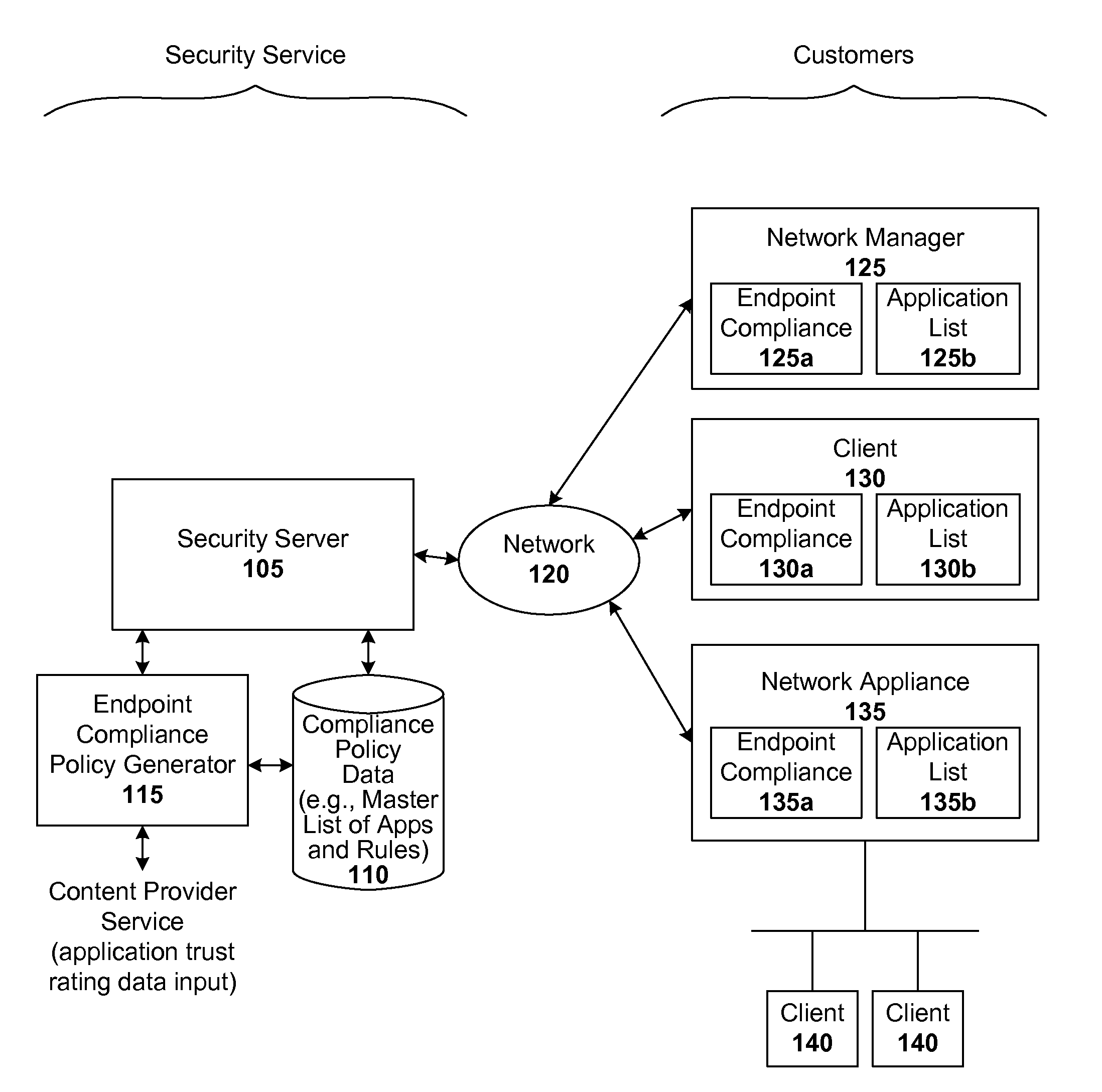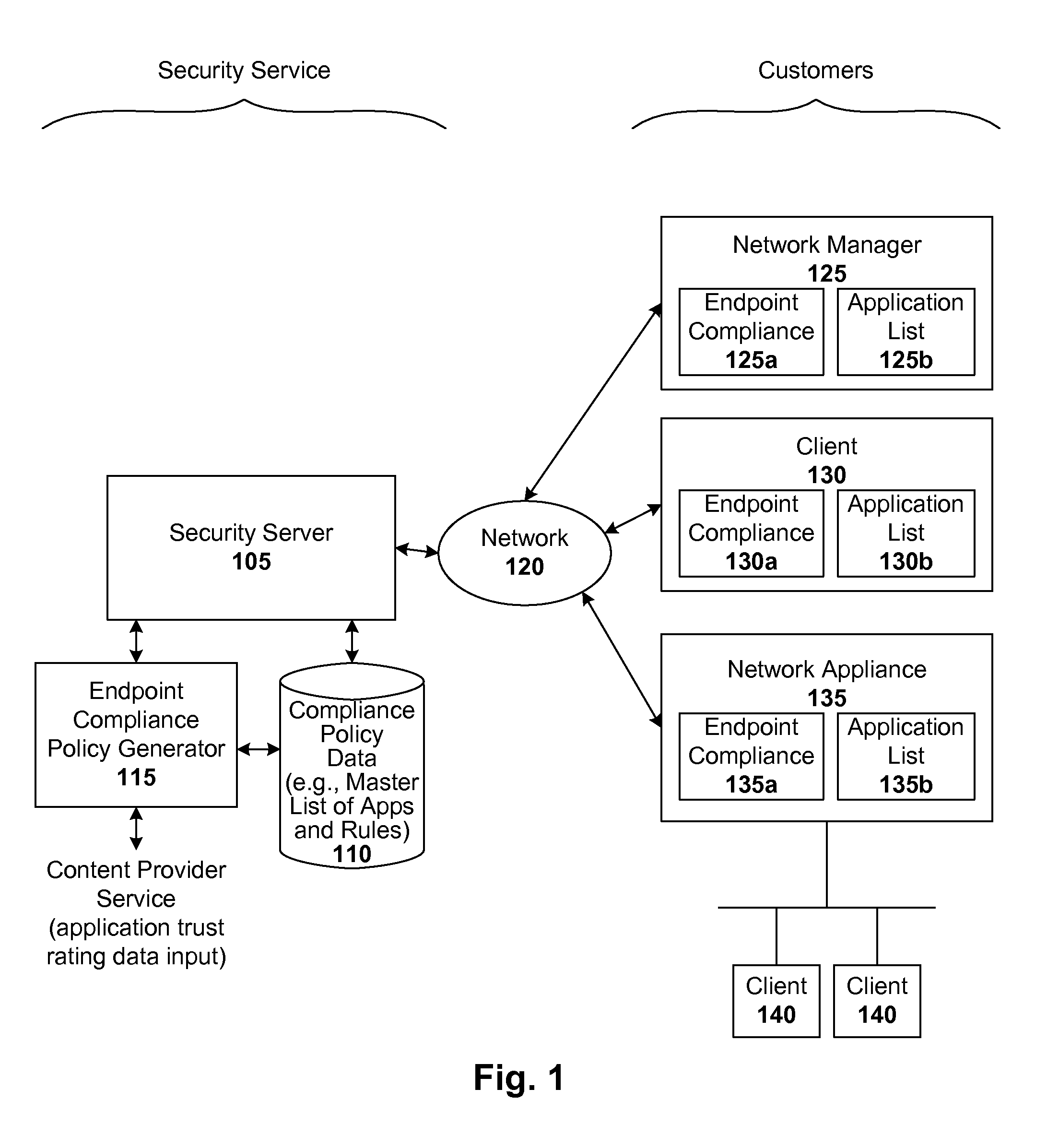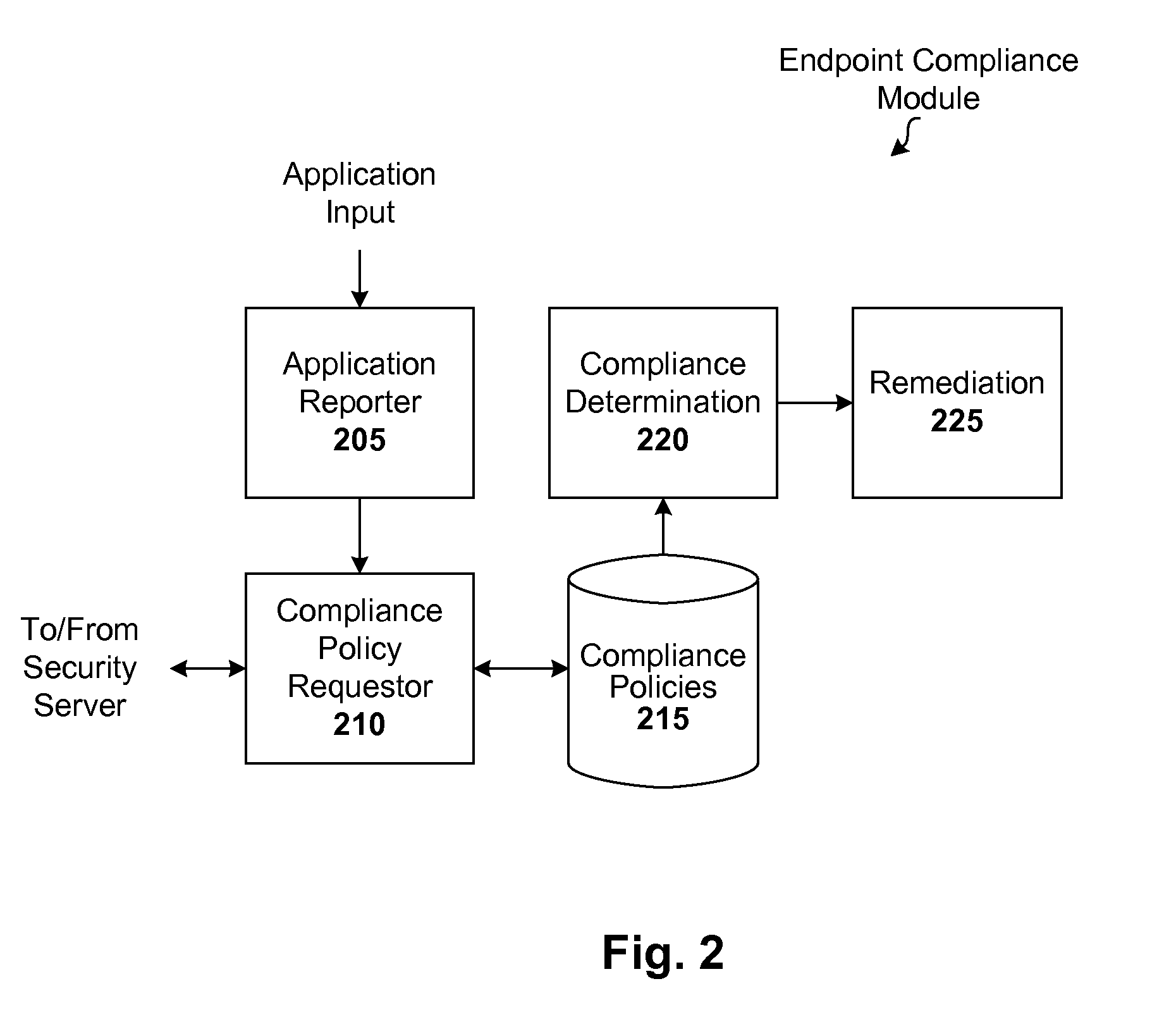Endpoint management using trust rating data
a technology of trust rating and endpoint management, applied in the field of computer security, can solve the problems of inability to pre-set an application list (both known good/bad and unknown) on an endpoint, the manager has very little control over what arbitrary or unknown applications the user can use, and the endpoint is not easy to be accessed
- Summary
- Abstract
- Description
- Claims
- Application Information
AI Technical Summary
Benefits of technology
Problems solved by technology
Method used
Image
Examples
Embodiment Construction
[0014]Techniques are disclosed for implementing dynamic endpoint management. Such endpoint management solutions are easy to deploy and maintain, relative to conventional endpoint compliance solutions, in that up-to-date application information for each endpoint are automatically provided by the customer site. Thus, the security service is capable of enforcing what applications users can or cannot run on the managed endpoints without having to have a static white-list or black-list of applications.
[0015]General Overview
[0016]Endpoints run trusted security components and use certain security settings in order to comply with security policies of the network on which they reside and operate. In accordance with one embodiment of the present invention, whenever an endpoint joins a managed network for the first time, a local security module submits a list of applications (e.g., with path, name, and hashes in a DNS or equivalent query) to a security server. The server validates the list and...
PUM
 Login to View More
Login to View More Abstract
Description
Claims
Application Information
 Login to View More
Login to View More - R&D
- Intellectual Property
- Life Sciences
- Materials
- Tech Scout
- Unparalleled Data Quality
- Higher Quality Content
- 60% Fewer Hallucinations
Browse by: Latest US Patents, China's latest patents, Technical Efficacy Thesaurus, Application Domain, Technology Topic, Popular Technical Reports.
© 2025 PatSnap. All rights reserved.Legal|Privacy policy|Modern Slavery Act Transparency Statement|Sitemap|About US| Contact US: help@patsnap.com



